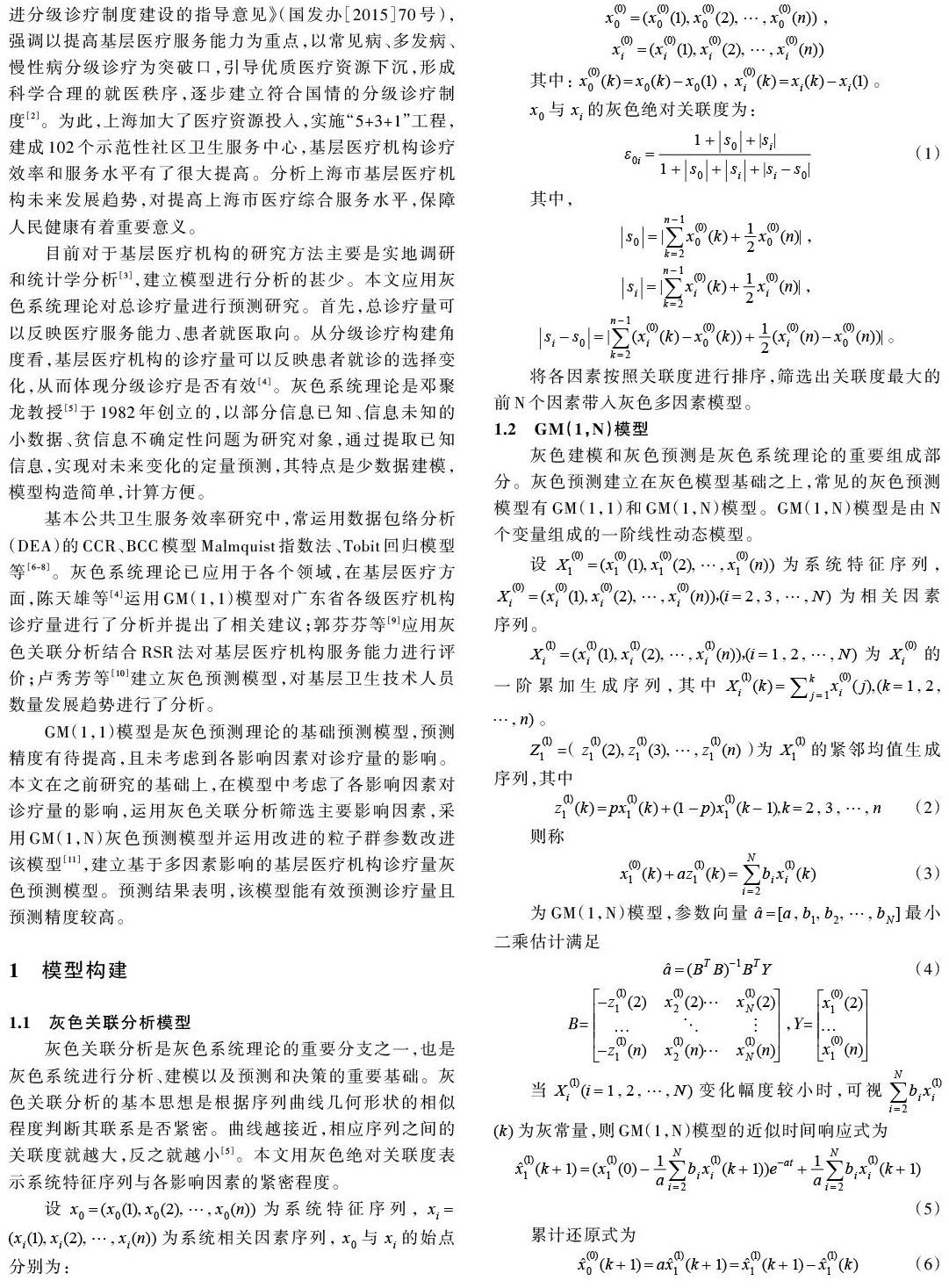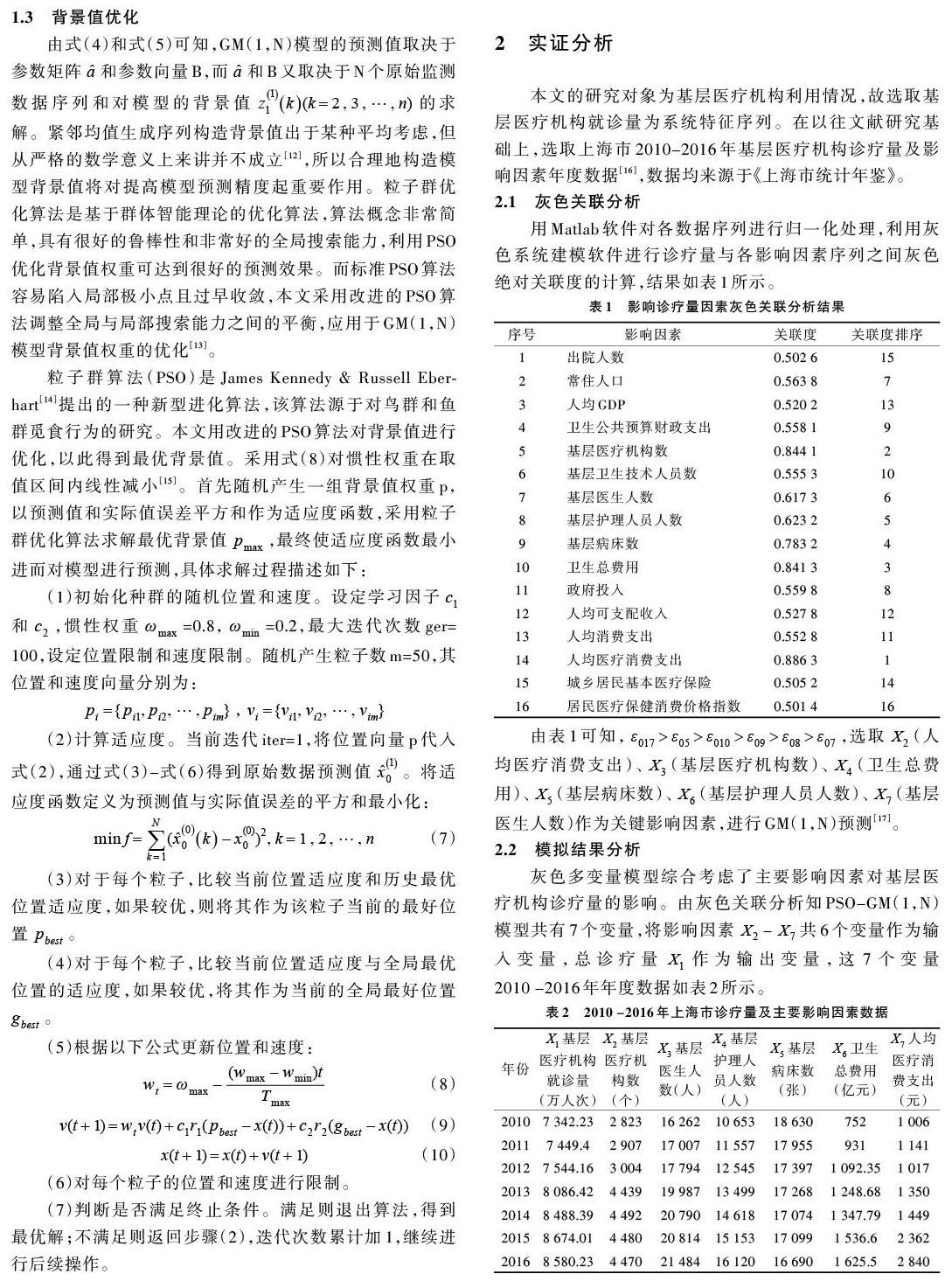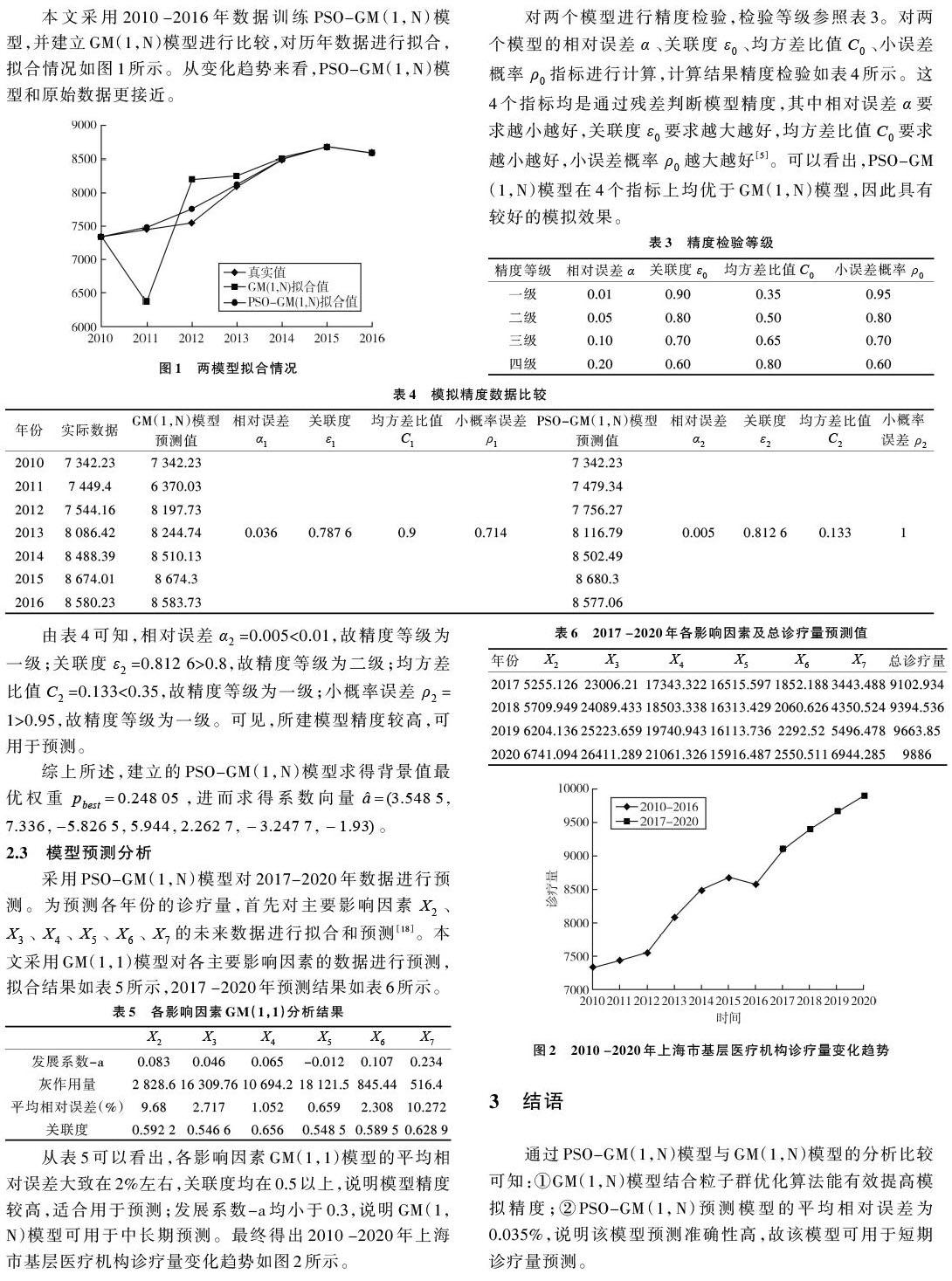基于多因素灰色模型的上海市基层医疗机构诊疗量预测
2019-07-08裴佳佳刘媛华
裴佳佳 刘媛华



摘 要:建立分级诊疗制度是我国医改“十三五”规划五大任务之首,而基层医疗卫生机构承担着分级诊疗的基础任务,是基本医疗卫生服务和公共卫生服务的双重承载,如何提高基层医疗卫生机构服务水平具有重大研究意义。选取上海市2010 -2016年基层医疗机构诊疗数据,建立基于多因素影响的上海市基层医疗机构诊疗量预测组合模型。首先运用灰色关联分析对各影响因素与诊疗量的相关性进行排序,筛选出主要影响因素变量;然后应用GM(1,N)模型对各年度诊疗量进行预测,并利用改进粒子群算法进行背景值优化,以提高预测准确性;最后运用该模型预测2017 -2020年诊疗量。仿真实验结果表明,该模型较单一的GM(1,N)模型准确性更高,预测有效可行。
关键词:医疗机构诊疗量预测;灰色关联分析;GM(1,N)模型;PSO;背景值优化
DOI:10. 11907/rjdk. 182517
中图分类号:TP319
文献标识码:A文章编号:1672-7800(2019)006-0130-05
Abstract: The establishment of a grading diagnosis and treatment system is the first of the five major tasks of the 13th Five-Year Plan for medical reform in China. The primary health care institutions are responsible for the basic tasks of grading diagnosis and treatment. They are the dual burdens of basic medical and public health services and how to improve the primary health care institutions. Service levels have significant research implications. This paper selects the data of primary and secondary medical institutions in Shanghai from 2010 to 2016, and establishes a combined model for the diagnosis and treatment of primary care institutions in Shanghai based on multi-factor effects. Firstly, the gray correlation analysis is used to sort the correlation between each influencing factor and the amount of diagnosis and treatment, and the main influencing factors are selected. Then the GM(1,N) model is used to predict the annual diagnosis and treatment, and the improved particle swarm optimization algorithm is used. The background value is optimized to improve the accuracy of the predicted value; finally, the model is used to predict the amount of medical treatment from 2017 to 2020. The simulation results show that the model has higher accuracy than the single GM(1,N) model, which indicates that the model is effective and feasible.
Key Words: forecast of diagnosis and treatment volume of medical institutions; grey relational analysis; GM(1,N) model; PSO; background value optimization
0 引言
基層医疗机构是整个医疗体系的根基,承担着提供基本医疗卫生服务和基本公共卫生服务的责任,对保障和改善居民健康状况具有重要作用,是国家实施分级诊疗、双向转诊制度很重要的一环,对缓解“看病难、看病贵”问题具有重要意义[1]。2015年9月,国务院办公厅出台《关于推进分级诊疗制度建设的指导意见》(国发办[2015]70号),强调以提高基层医疗服务能力为重点,以常见病、多发病、慢性病分级诊疗为突破口,引导优质医疗资源下沉,形成科学合理的就医秩序,逐步建立符合国情的分级诊疗制度[2]。为此,上海加大了医疗资源投入,实施“5+3+1”工程,建成102个示范性社区卫生服务中心,基层医疗机构诊疗效率和服务水平有了很大提高。分析上海市基层医疗机构未来发展趋势,对提高上海市医疗综合服务水平,保障人民健康有着重要意义。
目前对于基层医疗机构的研究方法主要是实地调研和统计学分析[3],建立模型进行分析的甚少。本文应用灰色系统理论对总诊疗量进行预测研究。首先,总诊疗量可以反映医疗服务能力、患者就医取向。从分级诊疗构建角度看,基层医疗机构的诊疗量可以反映患者就诊的选择变化,从而体现分级诊疗是否有效[4]。灰色系统理论是邓聚龙教授[5]于1982年创立的,以部分信息已知、信息未知的小数据、贫信息不确定性问题为研究对象,通过提取已知信息,实现对未来变化的定量预测,其特点是少数据建模,模型构造简单,计算方便。
